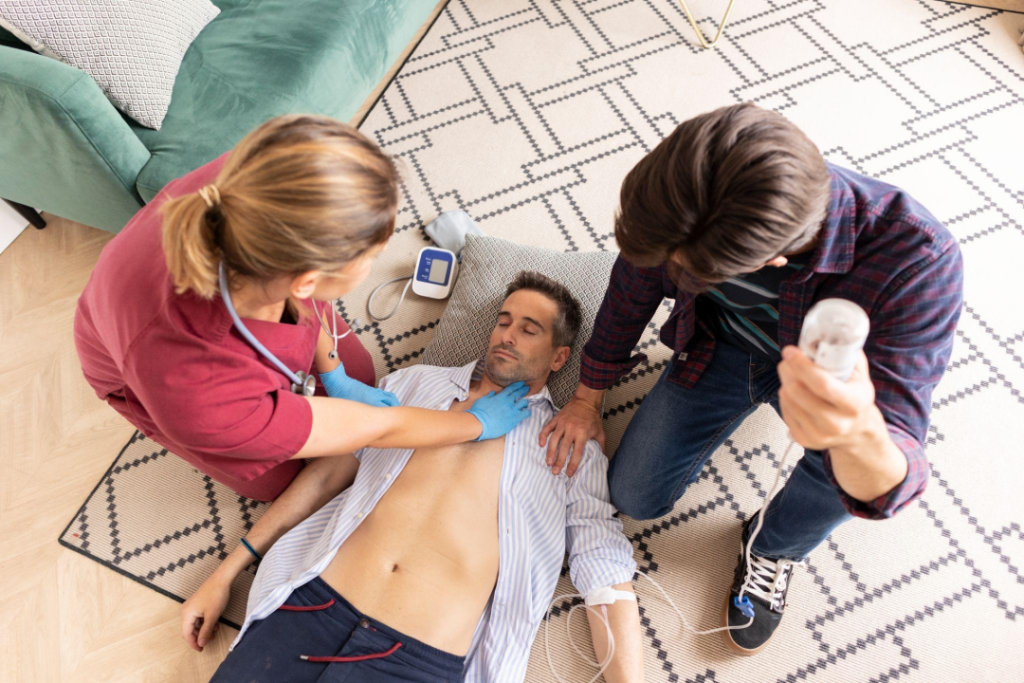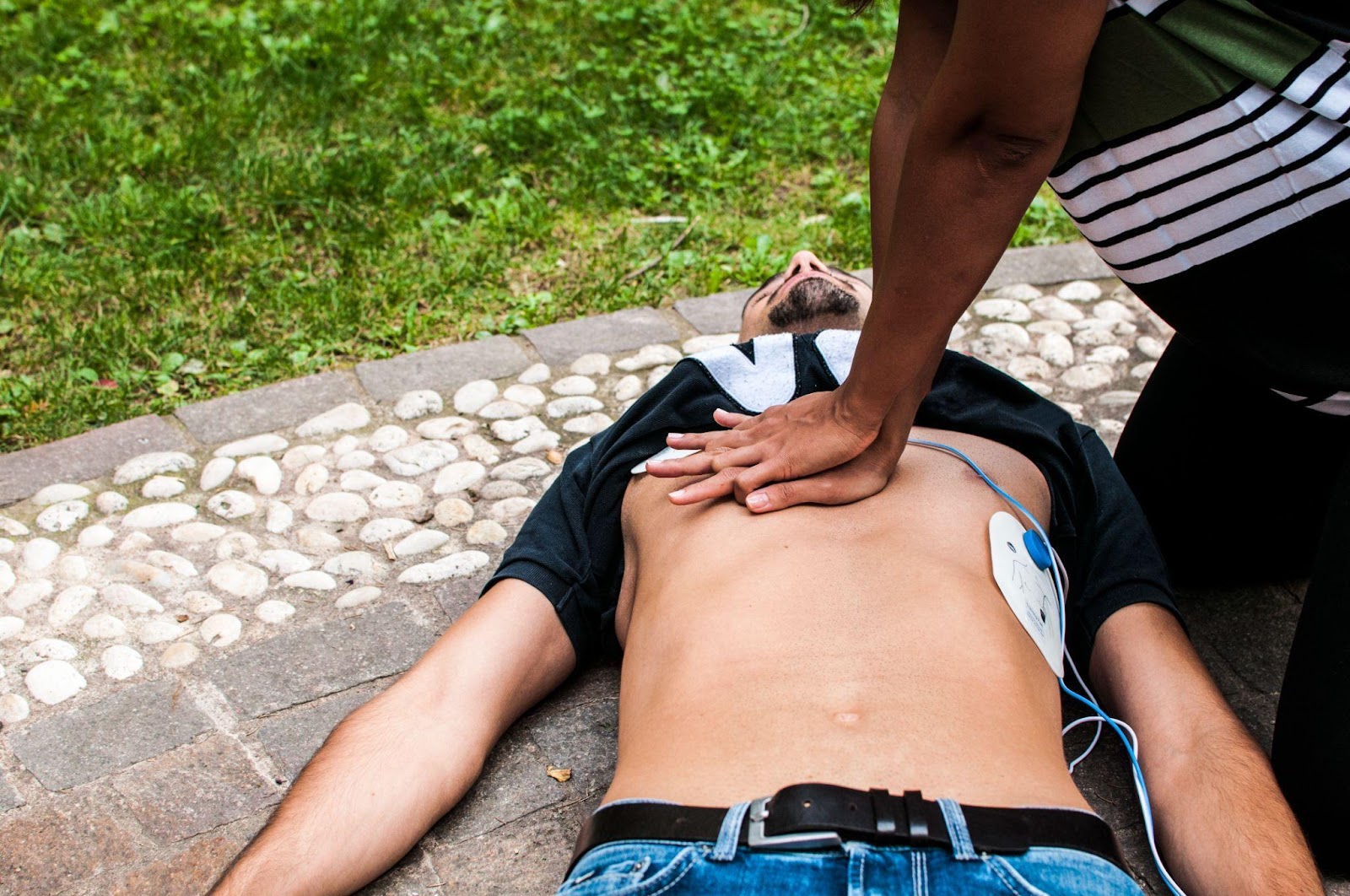Advanced Cardiovascular Life Support (ACLS) plays a crucial role in managing life-threatening cardiac emergencies. Real-life success stories showcase the impact of well-executed ACLS interventions, highlighting the challenges faced by healthcare professionals and the positive outcomes achieved through effective application of ACLS protocols.
These stories offer valuable insights and inspiration for healthcare providers, emphasizing the importance of early recognition, effective team dynamics, and adaptability in high-stakes situations. By exploring real-world examples, practitioners can deepen their understanding of ACLS principles and enhance their skills in providing life-saving care.
In this article, we will delve into the power of real-life ACLS success stories, examining key lessons learned and the impact of timely interventions on patient outcomes. From early bystander CPR to comprehensive post-arrest care, these stories underscore the significance of mastering ACLS techniques and fostering a culture of excellence in resuscitation.
Real-life ACLS success stories are compelling narratives that illustrate the effectiveness of Advanced Cardiovascular Life Support interventions in critical cardiac emergencies. These stories provide a glimpse into the real-world application of ACLS principles, showcasing the challenges faced by healthcare professionals and the positive outcomes achieved through their skilled interventions.
These success stories serve as powerful educational tools, offering valuable insights into the practical implementation of ACLS algorithms, the importance of effective team dynamics, and the impact of timely decision-making. By exploring these real-world examples, healthcare providers can gain a deeper understanding of the intricacies involved in managing complex cardiac emergencies and draw inspiration from the successful outcomes achieved.
Real-life ACLS success stories encompass a wide range of scenarios, from out-of-hospital cardiac arrests to in-hospital acute myocardial infarctions, highlighting sudden cardiac arrest causes and symptoms. They highlight the crucial role of early recognition, high-quality CPR, timely defibrillation, and effective post-resuscitation care in improving patient survival and neurological outcomes. These stories also emphasize the significance of seamless collaboration among healthcare teams, effective communication, and the ability to adapt to evolving situations.
Moreover, ACLS success stories serve as a testament to the importance of ongoing training and certification, such as the comprehensive courses offered by Affordable ACLS. By staying up-to-date with the latest guidelines and regularly honing their skills through simulation-based training, healthcare professionals can enhance their confidence and competence in applying ACLS principles in real-world settings.
The power of real-life ACLS success stories extends beyond individual cases; they contribute to a culture of excellence in resuscitation care. By sharing these stories within the healthcare community, providers can learn from each other’s experiences, celebrate successes, and continuously strive to improve the quality of care delivered to patients in cardiac emergencies.
In the following sections, we will explore specific examples of real-life ACLS success stories, delving into the key interventions, challenges faced, and lessons learned. These stories will underscore the vital role of ACLS in saving lives and the importance of mastering these life-saving skills to provide the highest standard of care to patients in critical situations.

In cardiac emergencies, the moments immediately following a sudden cardiac arrest are crucial for the patient’s survival. When a patient suddenly collapses in a public area, the ability of nearby individuals to quickly assess the situation and act can be lifesaving. Initiating chest compressions swiftly can substantially improve outcomes, bridging the gap until professional medical help arrives.
Having an Automated External Defibrillator (AED) accessible in public locations significantly enhances the potential for favorable outcomes, as part of the treatment of cardiac arrest. AEDs are user-friendly devices designed to guide individuals through the process of delivering a shock to the heart. Key takeaway: Ensuring AEDs are readily available and that the public is educated in their use can markedly boost survival rates. Training and awareness programs, such as a Cardiac Emergency Response Plan, should focus on empowering individuals to respond effectively in emergencies.
The importance of public readiness in emergency situations cannot be overstated. By increasing the number of people trained in CPR and promoting the strategic placement of AEDs, communities can turn potential bystanders into immediate responders. This proactive approach not only saves lives but also underscores the critical role of community preparedness in handling cardiac emergencies effectively.
In the realm of in-hospital emergencies, handling acute myocardial infarction demands a collaborative approach that leverages the strengths of a multidisciplinary team. When a patient exhibits symptoms of a heart attack, rapid coordination between team members becomes vital. This structured approach ensures that each participant knows their specific responsibilities, paving the way for a fluid response that enhances patient outcomes.
Key elements underpin the successful management of critical cardiac events. Firstly, precise information exchange is essential. Teams must engage in clear, concise dialogue to guarantee that critical details are communicated accurately and swiftly. Key takeaway: Developing a protocol for streamlined information flow can mitigate errors and ensure every member is synchronized in their efforts, facilitating timely decision-making.
Understanding individual roles within the team is another foundational aspect. Each member must have a clear grasp of their duties, whether it's administering medication, preparing equipment, or coordinating with other departments. In scenarios involving collaboration between the emergency department and the cardiac catheterization lab, this understanding allows for a swift transition from initial diagnosis to intervention. Key takeaway: Regular interdisciplinary simulations can reinforce role comprehension and prepare staff for the dynamics of real-life emergencies.
Collaboration extends to include various departments and specialties. Integrating expertise from different fields—such as emergency medicine, cardiology, and nursing—creates a resilient framework for addressing complex cases. By cultivating an environment that values diverse contributions, healthcare facilities can build a culture of mutual respect and shared objectives, ultimately improving patient outcomes.
In the fast-paced environment of cardiac emergencies, the ability to pivot swiftly is crucial. When a healthcare provider encounters a complication that deviates from the anticipated path of care, maintaining focus and systematically evaluating new data becomes vital. This measured approach allows for the identification of alternative strategies that align with the patient's evolving clinical needs.
Unforeseen obstacles necessitate a reevaluation of the intervention plan. This shift requires a foundation built on strong clinical knowledge and the principles of evidence-based practice. Key takeaway: Engaging in regular training sessions and embracing case study analyses enhance a provider’s readiness to tackle unexpected scenarios, ensuring that care delivery remains effective amidst unforeseen changes.
The strength of a cohesive emergency response team lies in its collective problem-solving capabilities. By actively seeking input from team members and integrating their perspectives, innovative solutions can be crafted to address complications. Key takeaway: Cultivating a collaborative environment that encourages diverse viewpoints can significantly bolster the team’s ability to navigate complex situations, ultimately leading to more successful patient outcomes.
Following a successful resuscitation, ensuring a smooth transition from acute care to ongoing recovery necessitates a comprehensive post-arrest strategy. This involves a multidisciplinary approach where healthcare providers focus on both medical stabilization and patient empowerment through education. By enhancing patients’ understanding of their condition and providing tailored resources, including guidance on what to do in a heart emergency, the aim is to foster informed, proactive involvement in their own health management.
Incorporating patients and their families into the recovery dialogue is pivotal for long-term success. By actively engaging them in discussions about lifestyle modifications and the importance of medication adherence, healthcare teams can instill a sense of agency in health-related decisions. Key takeaway: Customized educational interventions and structured support networks are instrumental in boosting patients’ confidence, thereby promoting adherence and improving overall health outcomes.
The transition from hospital care to home or outpatient services requires meticulous coordination. Establishing a seamless continuum of care involves scheduling follow-up appointments, designing individualized cardiac rehabilitation plans, and connecting patients with community resources. Key takeaway: Creating a comprehensive support system and ensuring effective communication between all care providers enable patients to receive consistent, high-quality care throughout their recovery phase.

In settings where medical resources are scarce, healthcare teams must maximize existing tools and personnel to deliver optimal care. When faced with a cardiac emergency, strategic coordination ensures that every available resource—both human and material—is employed efficiently. Focusing on essential interventions and leveraging existing capabilities are key to overcoming limitations.
The team's success relied on a structured approach. They identified the most crucial interventions and concentrated their efforts on these. Key takeaway: Focusing on actions like high-quality CPR and timely defibrillation can significantly influence outcomes, even with limited resources. By honing in on these critical actions, the team provided effective care swiftly and efficiently.
Innovation and flexibility were pivotal to their strategy. They adapted existing tools and procedures to meet immediate demands, showcasing a remarkable ability to improvise. Key takeaway: Cultivating a mindset open to creative solutions allows teams to navigate constraints effectively, enhancing their capability to manage emergencies regardless of resource availability.
This scenario highlights the adaptability of ACLS principles across varying environments. With a firm grasp of core ACLS protocols, healthcare providers can uphold high care standards under challenging conditions. The combination of adaptability and a strong foundation in ACLS equips teams to execute life-saving interventions competently, irrespective of the resources at their disposal.
In the aftermath of a successful ACLS intervention, the focus shifts to leveraging the experience for organizational growth. Conducting a detailed analysis of the entire response sequence, including understanding sudden cardiac arrest, allows teams to pinpoint both strengths and potential areas for refinement. This process not only celebrates the positive outcomes but also sets the stage for future advancements in care delivery.
Engaging a diverse group in the review process is essential for a comprehensive understanding of the intervention. By incorporating insights from various team members—ranging from emergency responders to administrative staff—healthcare organizations can ensure a thorough evaluation. Key takeaway: Cultivating an atmosphere where every participant feels valued and heard enhances the richness of the feedback gathered.
Translating these insights into actionable improvements is vital for fostering ongoing excellence. Developing specific training modules and refining protocols based on the analysis ensures that the organization remains at the forefront of cardiac emergency care. Key takeaway: By integrating these enhancements into everyday practice, healthcare teams can continuously elevate patient care standards and reinforce their commitment to excellence.
In a critical cardiac event, a healthcare provider adeptly utilized the skills obtained from recent ACLS training, demonstrating the profound impact of such education. This practical application of ACLS protocols highlights the importance of staying current with best practices. The provider's precise execution of interventions showcased how thorough preparation directly enhances patient care.
Training instills a sense of assurance that is crucial during high-pressure situations, enabling swift and decisive actions. Such assurance is vital for implementing life-saving measures effectively. Key takeaway: Continual professional development sharpens clinical acumen and boosts confidence, which are essential when managing emergencies.
By engaging with up-to-date ACLS courses, healthcare practitioners refine their ability to adapt to complex scenarios. This ongoing education fosters a proactive approach to integrating new insights and technologies into practice. As providers commit to their professional growth, they contribute to a dynamic and responsive healthcare environment that prioritizes patient safety and outcomes.
Faced with a multifaceted cardiac emergency, a healthcare team adeptly tackled a situation that required the full breadth of Advanced Cardiovascular Life Support (ACLS) interventions. Beginning with the swift identification of the cardiac event, each team member executed their role with precision, ensuring that the response was both coordinated and effective. As the patient experienced a severe cardiac complication, immediate high-quality CPR was vital, maintaining blood flow while the team prepared for subsequent critical interventions.
The application of defibrillation was pivotal in re-establishing the patient's normal heart rhythm. The team's meticulous coordination made this intervention seamless, reflecting a well-practiced response to cardiac emergencies. Following this, the team prioritized airway management through advanced techniques, optimizing the patient’s ventilation and oxygenation. Insight: The integration of these key interventions highlights the necessity of a well-rounded skill set in ACLS, ensuring that each action supports the overall resuscitation effort.
The strategic administration of medications was crucial to managing the patient’s condition, targeting specific cardiovascular issues and aiding in maintaining stability. This aspect of care underscored the importance of a comprehensive understanding of pharmacological protocols within ACLS practices. Insight: Incorporating pharmacological strategies alongside procedural interventions enhances the overall efficacy of ACLS and underscores the value of continuous professional development.
This coordinated execution of various ACLS components illustrated the strength of an integrated approach to resuscitation. By addressing every facet of the patient's needs, from immediate life support measures to stabilization, the team not only ensured the patient's immediate survival but also facilitated a pathway to recovery. This success story exemplifies the profound impact of thorough ACLS training and the significant difference a skilled, cohesive team can make in critical situations.
ACLS success stories transcend mere clinical achievements by serving as beacons of inspiration, guiding others in the medical community. When healthcare professionals share these experiences, they provide peers with firsthand insights into the complexities of emergency care. By doing so, they highlight innovative strategies and solutions to unforeseen challenges, enriching the collective knowledge base.
In training environments, such narratives offer a dynamic way to contextualize learning. They enable educators to present intricate concepts through real-world scenarios, making the lessons more impactful. Takeaway: Integrating these stories into educational programs enhances learners' understanding by linking theoretical knowledge with practical application, thus fostering a deeper engagement.
The dissemination of these success stories fosters a collaborative atmosphere within the healthcare community. As they are shared through conferences and seminars, they encourage a dialogue among practitioners from various fields, promoting an exchange of best practices and insights. This dialogue nurtures an environment of continuous learning, where achievements are celebrated, and innovative solutions are cultivated.
The influence of ACLS success narratives extends to cultivating a proactive approach to patient care. They serve as reminders of the pivotal role healthcare providers play, reinforcing a shared mission to elevate care standards. This commitment not only improves patient outcomes but also inspires a new generation of healthcare professionals to strive for excellence. As stories of successful interventions ripple through the community, they strengthen collaborative bonds and inspire ongoing dedication to advancing cardiac care.

Bridging the gap between theoretical knowledge and real-world application in ACLS requires an ongoing commitment to professional advancement. Healthcare professionals should immerse themselves in the latest ACLS guidelines to ensure that their practice aligns with cutting-edge techniques and protocols. Engaging in structured workshops and hands-on experience in controlled settings helps solidify these skills, making them second nature during high-stress situations.
Participating in hands-on workshops and practical drills is essential for translating classroom learning into effective fieldwork. These scenarios provide an invaluable opportunity to refine rapid assessment skills and execute critical interventions under pressure. By continuously exposing themselves to varied situations, practitioners become adept at adapting to the fluid nature of emergencies. Key takeaway: Regular involvement in practical exercises enables healthcare providers to seamlessly integrate new techniques, ensuring that their response is both swift and effective in real-world settings.
Fostering an organizational culture that prioritizes collaborative learning and open communication enhances the transition from theory to practice. By encouraging discussions that focus on real-life experiences and shared challenges, teams can cultivate innovative strategies and enhance collective problem-solving capabilities. Key takeaway: Establishing environments that support dialogue and feedback fosters a culture of shared growth, where continuous improvement becomes a collective endeavor, driving advancements in patient care.Real-life ACLS success stories serve as powerful reminders of the critical role healthcare professionals play in saving lives and the importance of mastering these life-saving skills. By continuously honing your expertise through comprehensive training and staying up-to-date with the latest guidelines, you can make a profound difference in the lives of your patients. We invite you to purchase your certification or recertification course today and join us in our mission to provide the highest standard of care in critical situations.
.jpg)

